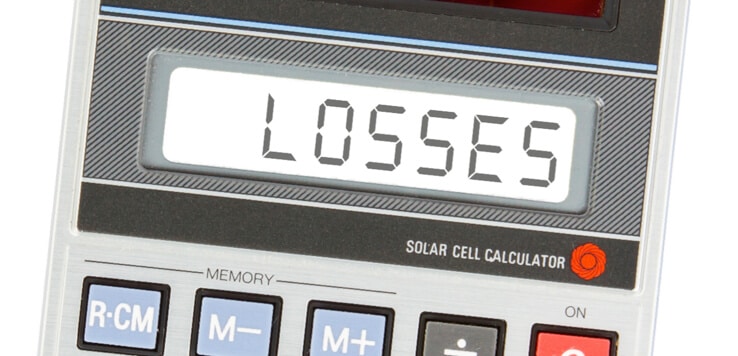The casino industry’s shutdown couldn’t have come at a worse time for Pennsylvania, and not just because of the loss of March Madness sports betting.
In a state more reliant on tax revenue from commercial gambling than is any other, it has seen its 12 casinos shut down at one of their busiest times of year and in a period when overall gaming revenue has been surging in recent months.
In 2019, the casinos’ brick-and-mortar and online sites, plus ancillary forms of gaming such as truck stop VGTs and fantasy sports, generated $3.41 billion in revenue from gamblers. Of that, $1.42 billion was diverted to government taxes.
The losses could be near $260 million so far
Just based on simple math extrapolating 2019’s figures, the industry would be losing most of $9.3 million daily and $65.4 million weekly in gambling revenue due to casino closures that took place March 13-17 from COVID-19 virus concerns.
That would add up to at least $260 million in the 28 days, as of Monday, since the last casino closed its doors. There would have been additional losses in the days prior to the shutdown, as attention over the coronavirus built and discouraged people from visiting public entertainment centers.
Those losses would be offset partially by increased iCasino revenue, the one form of gambling that has been boosted by the industry’s shutdown.
In February, iCasinos generated $19.5 million in revenue. The Pennsylvania Gaming Control Board will release monthly figures for March later this week that will indicate just how much the online activity increased last month and how much overall revenue suffered.
Lost tax revenue might already surpass $100 million
State, county, and local governments took in a combined $3.8 million daily and $26.9 million weekly from gaming taxes last year. They are losing out on that — a potential total of $106.4 million since March 17, with the exception of the amount they take in from iCasino activity and the small amount of online/mobile sports wagering that is continuing.
But the figures above don’t even begin to cover the total losses, as the casinos are losing additional income from food and beverage sales and entertainment events, plus lodging among those that offer hotel rooms.
State government, meanwhile, is losing the casinos’ corporate income tax payments and the personal income taxes it would normally see from those among the 16,000-plus casino industry employees now placed on temporary furlough.
Those employees were paid through March by the casinos, but a number have had their paychecks stopped since then. Unemployment insurance payments to those workers would be another huge cost to the state.
March: A record revenue month in the past
The losses would be costly at any time, but consider this: The record month for gaming revenue in Pennsylvania was March of last year.
March 2019 generated $309.1 million from all commercial gambling activity (not counting racetracks and the Pennsylvania Lottery, which have also been severely impacted by the coronavirus). Prior to that, the record month was March 2018.
March is a long month that brings many people into casinos who shelter at home during the winter, avoiding bad weather and lousy road conditions. Add to that the patrons who come out just for the excitement of viewing, and betting on, the NCAA’s March Madness among a crowd.
It’s hard to say with certainty that March 2020 would have set a new revenue record, if not for the shutdowns. March 2019 had the benefit of five full weekends, unlike this March.
At the same time, even if there were no increase in slots and table games revenue, the income from online casinos and online sports wagering would have provided a boost. Those did not exist a year ago, nor did truck stop VGT terminals, which generated $1.3 million in February and would have increased in March.
Recent months have seen gaming uptick
With Pennsylvania’s widespread gambling expansion coming to further fruition every month, its overall gaming revenue was headed for an all-time annual high until the pandemic froze everything you can’t do by computer or phone.
Gaming revenue from all forms was up 13.8% in February from the same month in 2019.
This February received an artificial boost from having one extra day in a leap year, but January 2020, without any such benefit, generated 16.9% more revenue than January 2019.
Month-by-month revenue increases for the past half year, in fact, have averaged 10.4% compared to the same six months in 2019.
Many things can factor into how casinos perform in one month vs. another — the weather, how the calendar falls, openings, promotions, construction, renovations — but there’s no question that the new forms of legal gambling have had an overall positive impact on revenue for the casinos and governments.
PA government is unusually casino-dependent
Every state with casinos is reeling from the industry shutdown that has no end in sight — none would compare to the overall impact suffered in gambling-dependent Nevada — but Pennsylvania has its own special damage.
Due to a combination of its large population and relatively high gaming taxes, the $1.4 billion in annual government revenue raised directly from commercial gambling in Pennsylvania is by far the highest in the country.
According to the annual State of the States report published by the American Gaming Association, New York is the only other state to raise more than $1 billion in tax revenue from the industry.
There is no way as yet to assess the full damage the coronavirus shutdowns will cause in Pennsylvania, as no one knows how long they will last, nor what the lingering impact will be on the volume of activity after casinos reopen.
The tax money is used in various ways by the state — in addition to a small portion being allocated to county and local governments that host casinos — so it’s not as though Pennsylvania’s 2019-20 general budget will automatically have a $1 hole for every $1 in taxes not received.
But there will be an impact of some kind for the various purposes for which the funds are designated.
Last year, among some of the designated allocations, more than $944 million went to the general fund and property tax relief; $241.2 million for horse racing purses and horse breeding; $140.6 million for economic development and tourism; and more than $64 million for county and local governments.
It’s impossible to say how those will be reduced this year. Those losses, however, are adding up every day.
Image courtesy of Shutterstock.com






